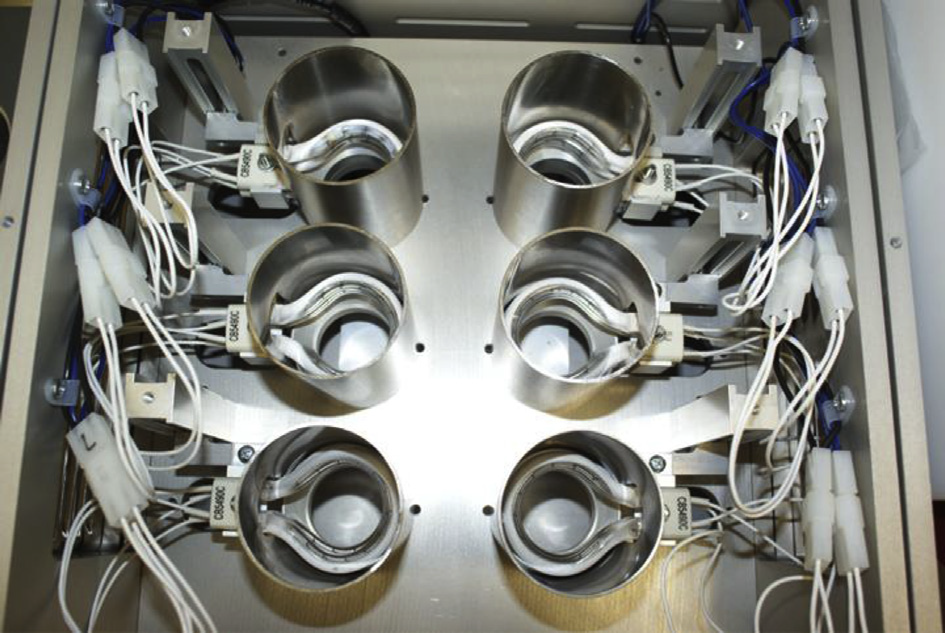
Detailed characterization of metals in ores is a crucial step in economic mining that requires the highest level of precision. Whether a mine is viable or not for potential development, any estimation of its commercial value will rely substantially on this information. Furthermore, the time it takes to produce the necessary data for samples from sampling campaigns is another important factor for potential exploration in the mining industry.
The costs of drilling make it vital to get swift feedback to reduce both the extent of damage to the environment and the number of useless cores. There is a persistent demand from the mining industry for rapid, cost-effective techniques that can determine the various elements in ores, while preserving key analytical attributes, such as high recovery and method reproducibility.
Acid digestion techniques have long been favored in this application because the cost of digestion is comparatively low. Moreover, these methods present less background during the instrumental determination, in contrast to other methods, such as fusion, that generates high spectral backgrounds which can also be a cause for contamination.
Presently, microwave and hot block digestions are the most commonly used methods of acid digestion concerning the determination of base metals. In the case of hot block digestions, relatively large volumes of acids are consumed during digestion and fugitive emission of acid vapor is observed. Closed-vessel microwave digestions are not easily adaptable to sequential processes of digestion, as described below, while open vessel microwave digestions, although well-suited for many environmental samples are troublesome.
Taylor et al. sum up the difficulties with open-vessel microwave and hot block digestions in their 2002 paper: “The microwave digestion method gave poor results for granitic samples containing refractory minerals, however, fusion was the preferred method of preparation for these samples. Sample preparation time was reduced from several days, using a conventional hotplate digestion method, to one hour per sample using our microwave method.”1
Mester and Sturgeon recently published a comprehensive monograph on the preparation of samples for trace element determination, which offers a considerable review of digestion methods for the analyst2. However, digestion time appears to be the persistent rate-limiting step in the analytical process. Chromite is one such example of a mineral phase that is renowned for being stubborn and difficult to digest.
For instance, in a 1999 application note, CEM chronicles a two-step methodology for the digestion of chromite ore; the first step makes use of a mixture of sulfuric, phosphoric, and nitric acids, while the second uses nitric acid, with the total digestion time being around 2 hours. This two-step process ignores the additional time required for cooling, opening the digestion apparatus, introducing the next charge of acid, closing the vessel, and resetting it in the microwave oven3.
Hot block digestions of chromite with acid combinations are bypassed, and fusion is recommended, “… for samples containing refractory minerals e.g. chromite that is difficult to bring into solution by other means.” 4. In research and commercial laboratories, base metals ores are routinely analyzed. The ores of these metals are typically found in the forms of sulfides, oxides, and silicates. Throughout this study, the digestion of a range of base metal ores (Co, Cr, Cu, Fe, Mn, Mo, Ni, Pb, Sb, Ti, W, and Zn) was examined to obtain baseline information on the efficiency and effectiveness of this innovative digestion technique.
Based on current knowledge, there has been no standardized research published in the past where infrared-based digestions for ores are concerned. In addition, evaluation of the general performance of the infrared digester, which was developed from a prototype used in the previous work5,6, was undertaken.
Where the conventional method was ineffective, novel chemistry was advanced to promote the release of the analytes of interest. The process through which samples are digested is a considerable, distinguishing attribute of the infrared digestion technology.
The working hypothesis that supplies a mechanism for the schematic digestion of samples indicates that the surface of particles of the sample is directly heated by the infrared radiation. Therefore, localized superheating of the surface that sits in the boiling acid occurs. The inference is that the dissolution process is accelerated by the reaction of the acid with the superheated surface.
Essentially, the digestion temperatures are regulated by the boiling points of the acid(s) used, which can significantly vary between approximately 110 oC relevant to the nitric acid, and to 340 oC in the case of sulfuric acid.

 Want to know more? Click here to read the full article.
Want to know more? Click here to read the full article.
References and Further Reading
- V.F. Taylor, A. Toms, H.P. Longerich, Anal. Bioanal. Chem. 372 (2002) 360-365.
- Z. Mester, R. Sturgeon, Sample Preparation for Trace Element Analysis, in: Comprehensive Analytical Chemistry, vol. XLI, Elsevier, Amsterdam, 2003.
- https://uwm.edu.pl/ (accessed 08.12.15).
- B.J. Alloway (Ed.), Heavy Metals in Soils, third ed., Springer, Dordrecht, 2013, p. 107.
- Y. Wang, R. Kanipayor, I.D. Brindle, Rapid high-performance sample digestion for ICP determination by ColdBlock™ digestion: part 1:environmental samples, J. Anal. At. Spectrom. 29 (2014) 162-168.
- Y. Wang, I.D. Brindle, Rapid high-performance sample digestion for ICP determination by ColdBlock™ digestion: part 2: gold determination in geological samples with memory effect elimination, J. Anal. At. Spectrom. 29 (2014) 1904-1911.

To learn more about ColdBlock Technologies Inc and their revolutionary ColdBlock Digestion technology, visit them at www.ColdBlock.ca.
For more information on this source, please visit ColdBlock Technologies Inc.